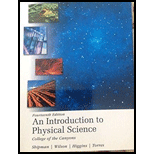
On a day when the air temperature is 85°F, the wet-bulb reading of a psychrometer is 70°F. Find each of the following: (a) relative humidity, (b) dew point, (c) maximum moisture capacity of the air, and (d) actual moisture content of the air.
(a)
Answer to Problem 5E
Explanation of Solution
Given info: The dry-bulb and wet-bulb readings of a psychrometer are
Explanation:
Wet-bulb depression is the difference in the dry-bulb and wet-bulb reading.
The expression for the wet-bulb depression is as follows,
Here,
Substitute
Refer table H.1 in Appendix H provided in the textbook to find the relative humidity.
The relative humidity of the air is
Conclusion:
Therefore, the relative humidity is
(b)
Answer to Problem 5E
Explanation of Solution
Given info: The dry-bulb and wet-bulb readings of a psychrometer are
Explanation:
Wet-bulb depression is the difference in the dry-bulb and wet-bulb reading.
The expression for the wet-bulb depression is as follows,
Here,
Substitute
Refer table H.2 in Appendix H provided in the textbook to find the dew point.
The dew point is
Conclusion:
The dew point of the air is
(c)
Answer to Problem 5E
Explanation of Solution
Given info: The dry-bulb and wet-bulb readings of a psychrometer are
Explanation:
Wet-bulb depression is the difference in the dry-bulb and wet-bulb reading.
The expression for the wet-bulb depression is as follows,
Here,
Substitute
Refer table H.1 in Appendix H provided in the textbook to find the maximum moisture capacity of the air.
The maximum moisture capacity of the air is
Conclusion:
The maximum moisture capacity of the air is
(d)
Answer to Problem 5E
Explanation of Solution
Given info: The dry-bulb and wet-bulb readings of a psychrometer are
Explanation:
The expression for the relative humidity is as follows,
Here,
Rearrange equation (1) to get an expression for the actual moisture content of the air.
Substitute
The actual moisture content of the air is
Conclusion:
The actual moisture content of the air is
Want to see more full solutions like this?
Chapter 19 Solutions
An Introduction To Physical Science College Of The Canyons 14th Edition And Real World Science Physics And Chemistry Applications Lab Manual
- Assume that the composition of the earth’s atmosphere is constant below an altitude of 100 km and according to Barometric equation, the pressure decreases with altitude and the atmosphere has a uniform temperature of 25°C. Calculate the barometric pressure in Pa at Mount Ağrı, for which h = 5137m (g = 9.80 m/s2). Assume that 80% of the air is nitrogen and 20% is oxygen.arrow_forwardTRUE or FALSE?The velocity profile of the wind along the vertical inside the Atmospheric Boundary Layer is constant.arrow_forwardiWhat type of air mass do you think would be responsible for cold, dry winter weather in Ireland? a.mT b.cT c.cP d.mP iiWhich of the following statements about specific humidity is TRUE? Select one: a.specific humidity changes as a given mass of air expands b.specific humidity is also known as relative humidity c.specific humidity is measured in grams of water vapour per kilogram of air d.specific humidity changes as a given mass of air is compressedarrow_forward
- Imagine 2 locations, a snowy one, and a warm one. Both locations have a water vapor amount of 7 g/kg in the air. Which location is more humid percent-wise and why?arrow_forwardwhy does air rise at 60 latitude?arrow_forwardExplain how and why each of the following will change as a parcel of air with an unchanging amount of water vapor rises, expands, and cools: (a) absolute humidity; (b) relative humidity; (c) actual vapor pressure; and (d) saturation vapor pressurearrow_forward
- If the air temperature is 15 degree Celsius and the water vapor content is 5 g/kg, what is the relative humidity?arrow_forwardAssuming air as the perfect gas, find the density of air at an altitude of 10000 feet at which the pressure is 50225 Pa, assuming the International Standard Atmosphere (ISA) weather conditions at sea level. (Under standard atmospheric conditions, the air pressure is 101325 Pa, its density is 1,225 kg / m3, its temperature is 15 0C. In every 1000 feet in the troposphere, the temperature drops by 2 K.)arrow_forwardOn a winter day, a psychrometer has a dry-bulb reading of 35F and a wet-bulb reading of 29F. (a) What is the actual moisture content of the air? (b) Would the water in the wick of the wet bulb freeze? Explain.arrow_forward
 An Introduction to Physical SciencePhysicsISBN:9781305079137Author:James Shipman, Jerry D. Wilson, Charles A. Higgins, Omar TorresPublisher:Cengage Learning
An Introduction to Physical SciencePhysicsISBN:9781305079137Author:James Shipman, Jerry D. Wilson, Charles A. Higgins, Omar TorresPublisher:Cengage Learning
